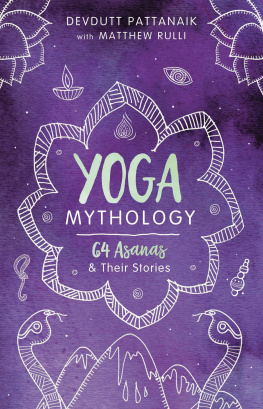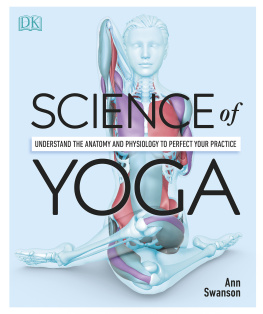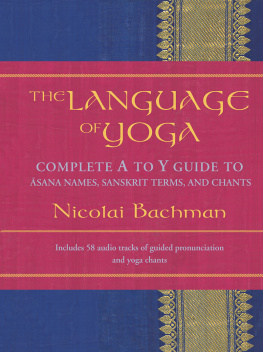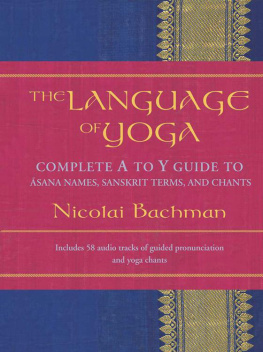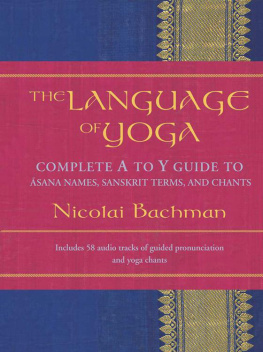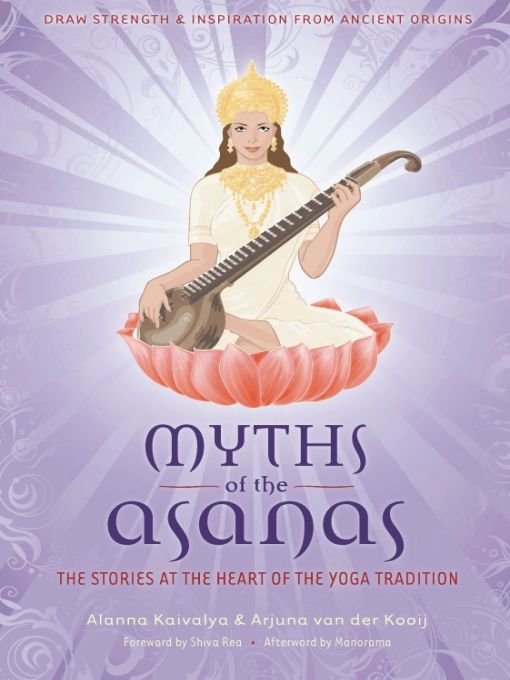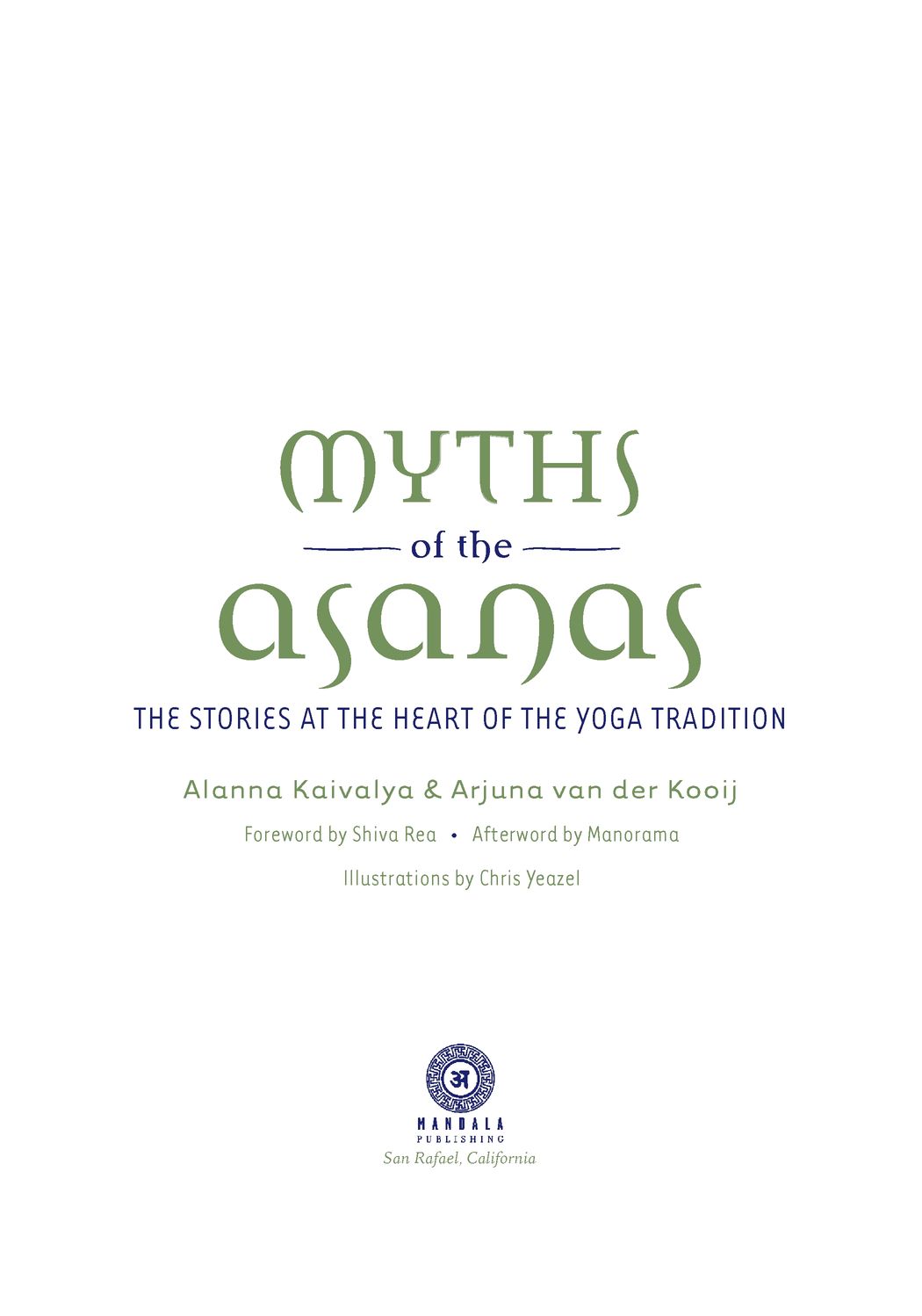Table of Contents
To I. L. M.
Govindam adi purusham tam aham bhajami
foreword
YOGA IS MYTHIC. It is a reflection of the cosmic forces that are timeless and universal in naturecreation, continuity, and dissolutionwhich are embodied in yoga as asanas and mudras. You dont need to travel to India to feel the coiled power of a cobra, or bhujangasana, in your body, or the rooted power of a tree in in vrikshasana. But few Westerners know the stories behind the names of the asanas or of the all-pervasive nature of the Shiva and Ganesha myths that are known by everyone in India, from children to the gurus. Most all traditional Indian songs, dances, and visual arts are depictions of myths. Myths are special teachers. They are sometimes mysterious, contradictory, peaceful, wrathful, and liberating at their core.
What is the somatic feeling of tearing open your heart as the monkey god Hanuman? Who are the great sages Bharadvaja and Astavakra, whom the asanas are named after? What is the significance of Natarajasana, or the lord of the dance pose?
When you learn the stories of the asanas, you are entering a space of mythic consciousness, the place where you no longer need to know the outer asanathose remarkable moving mudrasbut the inner asana, or the landscape to which the myth refers.
My father gave me my name, Shiva, when he was an art student. He had never attended a yoga class before and was truly inspired by the myths of Shiva, the matted-hair cosmic dancer decimating ignorance with the sublime grace and power of his Ananda Tandava, or dance of bliss, a great archetype for the late sixties. As a seven-year-old growing up in Berkeley in 1974 at the heart of Vietnam Protest, I looked out into the world and felt the heaviness of cosmic destruction. For most of my childhood, I actually thought that I was named after the lord of destruction, which was the common definition in encyclopedias and dictionaries. I didnt have a book or a teacher at that time to reveal the inner meanings of the name. I now know there are a thousand names for Shivaranging from the peaceful and sublime Mahayogin, from which all the yogic asanas emerged; to the lover of Shakti, Kamadeva; to the great howler, Rudra.
I have fallen madly in love with the goddess and have been anchored during the storms of my life in the myths of the great goddess Durga, who, accompanied by her army of sixty-four thousand yoginis, enters places of utter chaos and resurrects the world through her fierce love. I consider myself a peaceful, simple, nature-loving person, and yet there is something so wild and intensely satisfying about these yogic myths that shatters our rigid, conservative, and shallow ideas about our divine nature and truly meets us in the light and dark of our being and life path.
Alanna Kaivalya and Arjuna van der Kooij have offered you a treasure in Myths of the Asanas from the depth of their personal realizations as yogic practitioners and kirtan artists. They have lived this terrain in their own hearts and lives as well as in the context in which myth is perpetually reflected. I have great respect for David Life and Sharon Gannon, and for Alannas training as a Jivamukti teacher, for this method has brought satsangthe sharing of truth through yogas wisdom teachingsinto the landscape of asana practice. If you are a yoga practitioner, you will bathe in the mythic wisdom of this book.
However, if you know nothing of the asanas, you will also benefit from these powerful myths. They have sustained the flow of yoga since the earliest recorded written history. These myths are some of the most profound understandings of universal consciousness. Even Einstein was deeply influenced by the creation myths of Nataraja as a reflection of his discoveries of quantum physics.
I hope you will enjoy this gemlike book as much as I have, as it is a resource to have at your fingertips to gradually absorb the power of these teachings into your own consciousness and evolution in yoga practice. This is a wonderful book for yoga teachers, and I finally have a great resource to direct my own teacher trainees for further study.
Jai Sri Ganesha and his sacred tusk, which was used to help Vyasa record some of these myths from the Mahabharata.
Jai Mandala Publishing for continuing to support such works as Myths of the Asanas.
Blessings to all travelers on this meandering road of life.
SHIVA REA
Costa Rica, 2010
introduction
THE GIFTS OF YOGA are as numerous and varied as the petals of a lotus blossom. Although yogas broader teachings touch on all aspects of life, it is asana practice that has made it immensely popular around the globe, and there is a good reason for it. Asana practice challenges the body and focuses the mind, while its philosophical principles encourage spiritual growth. Asanas can be viewed as a kind of prayer, and they have a significant and wholesome effect on our physical body, our psyche, and our emotional health. This distinguishes asana practice from other systematized forms of movement.
This book provides the background myths for about thirty asanas. Asanas are often named after some ancient yogic sage, deity, or sacred animal. The myths behind the asanas are intended to serve as inspirational guides that can enhance our yoga practice, fueling it with a deeper, meditative quality. They provide us with a fresh perspective on ourselves, helping us connect our everyday lives with yoga through the postures.
All of the stories in this book illustrate some mystical, hidden potential within us. This potential tends to lie dormant until we illuminate it with awareness. To be mystical is to look within oneself for the source of all that is. In this sense the essence of the stories is found within the experience of our own hearts.
Each of the characters in the myths displays human flaws, which make them easy to relate to. So as we read about the uncertainty of Hanuman before making his leap across the ocean, we are invited to think about the moments in our life when we felt the same way, when we called into question our potential and doubted our ability to achieve something we thought was not possible.
These myths have been told since ancient times. Whether or not they actually happened is of less importance than the symbolic meaning they convey. The myths of ancient India concern themselves with the transformation of consciousness. Yoga and mythology scholar Mircea Eliade defined myths as dramatic breakthroughs of the sacred into the world. He noted that the language of myth does not argue, but simply presents. The myths of yogas spiritual tradition have the power to change old patterns of behavior, providing us with enlightened insight that brings us closer to who we really are. And this is precisely what the yoga tradition is concerned with. As Ecknath Easwaran put it, yogic myth has a genius to clothe the infinite in human form.
The myths point to a higher state of consciousness. They depict the travel of the soul from ignorance to illumination. Their goal is to take us from the illusions of our ego-centered existence (




